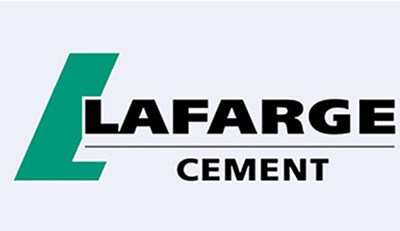Lafarge cement overcame economic difficulties in the first half of 2022 by increasing both top-line and bottom-line profitability. Although interest and finance income fell, the cement company raised top-line earnings by passing on cost increases to customers through inflated prices. Analysts observed an increase in liquidity, shareholders’ return, and operational efficiencies.
The company’s management reiterated its commitment to its sustainability pillars, unveiled in 2021, at its investor and analysts conference in August 2022. The cement manufacturer achieved a thermal substitution rate of 9% for energy products, obtaining 1,496,138 Gigajoules of energy from renewable sources; it reached 157.71L/t for cement production and recycled over 89,000 tonnes of waste, Proshare learnt.
It also recycled 600 hectares of land and processed 446,000 cubic meters of water across three plants and rehabilitated 600 hectares of land with 16,500 seedlings and 124,000 direct beneficiaries from a N2bn corporate social investment initiative. By the end of 2022, Lafarge Africa will be reintroducing a new product called CO₂MENT, which they issued in late 2020 and stopped for nine months with an investment worth 20 million.
The company’s share price remained stable at the start until it began to plummet in March. The share price recovered its bullish trend in May, reaching a resistance level of N21.80k on May 12, 2022, with a support level of N21.80k on April 5, 2022. In August, the share price rose slightly, with a year-to-date return of +6.04% from N24.0k on January 04, 2022, to N25.45k on August 04, 2022.
Despite the present economic slowdown (Q2 2022 GDP growth was 3.54% versus 5.01% in Q2 2021), Lafarge cement increased top-line earnings by +28.67%, from N145.0bn in H1 2021 to N186.6bn in H1 2022. Analysts remarked that the increase was due to increased sales of cement, aggregates, and concrete. Despite the +51.5% increase in production costs driven by high maintenance expenses and rising input prices, the company pulled up revenue with income from government grants and gains from the disposal of property and plant.
Profit before tax (PBT) has steadily increased over the last half-year. PBT increased by +27.57% year on year in H1 2022, from N36.75 billion in 2021 to N46.88 billion in 2022. The cement manufacturer’s earnings were boosted by a +50.04% increase in operating profit and a similar decrease in financing costs. Finance income fell -30.11% from N2.66 billion to N1.86 billion. Concurrently, short-term fixed-income interest declined -32.31%.
Lafarge cement’s Acid test ratio, excluding inventory, demonstrated an enhanced ability to cover current commitments. The ratio increased from 0.64 in the first half of 2021 to 0.7 in the first half of 2022. In H1 2022, the company had the greatest ratio, driven by a +36.91 growth in current assets versus a +25.29 increase in current liabilities.
The clinker maker’s asset turnover has increased by 0.04 percent each year over the last four years, rising from 0.20 in 2019 to 0.24 in 2020. The asset turnover ratio increased by 0.05 in H1 2022, from 0.28 in H1 2021 to 0.33 in H1 2022. Lafarge Cement’s total assets increased by +11.0%, resulting in a significant increase in the asset turnover ratio.
Lafarge’s liquidity increased in H1, with the current ratio rising from 0.96 in H1 2021 to 1.04 in H1 2022. Current assets exceeded current liabilities at the cement manufacturer, showing that accessible short-term assets could satisfy current financial obligations.
A study at the company’s balance sheet revealed that Lafarge depended mainly on equity rather than debt, with equity standing at N399.9 billion and total debts standing at N26.9 billion in H1 2022; the firm has heavily financed operations through shareholders’ equity since H1 2020. The company’s debt-to-equity ratio climbed modestly to 0.07 in H1 2022 from 0.05 in H1 2021; the ratio rose on the back of a rise in total debt from N19.7 billion in H1 2021 to N26.9 billion in H1 2022.
Analysts noted that the cement manufacturer relied substantially on equity. The return to shareholders fell from 0.52 in H1 2019 to 0.34 in H1 2020. Following this dramatic drop, equity returns increased steadily in succeeding years. It increased to 0.47 in H1 2022 from 0.39 in H1 2021, owing to an increase in top-line earnings.




